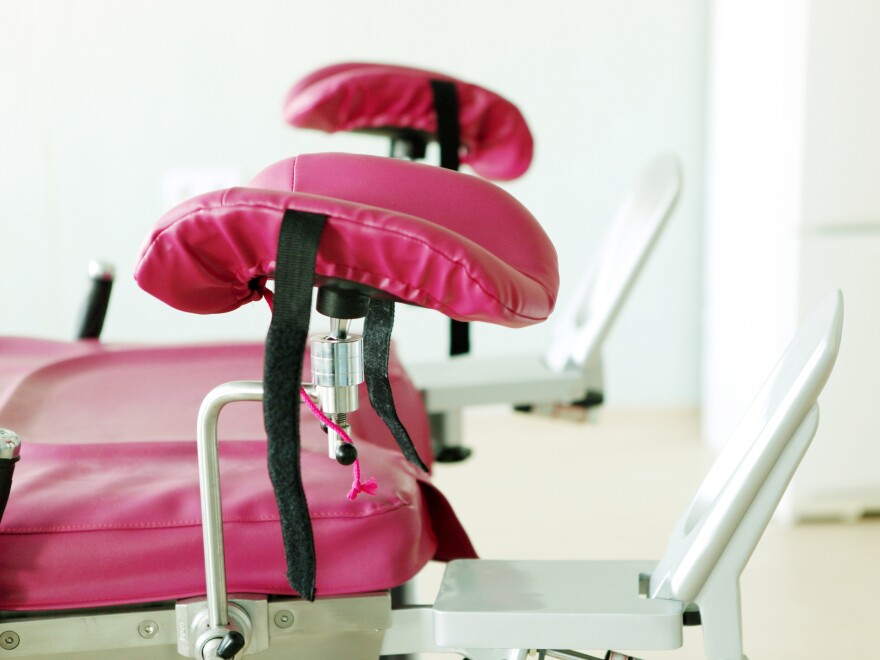An estimated 1.4 million adolescent girls and young women in the U.S. might have received an unnecessary pelvic exam between 2011 and 2017, according to a new study. And an estimated 1.6 million might have received an unnecessary Pap test. The authors of , which was published this week in the journal JAMA Internal Medicine, say the overuse of these procedures 鈥� which can cause false-positives and anxiety 鈥� led to an estimated $123 million annually in needless expenses in 2014 alone.
The study was based on data from 3,410 respondents to the National Survey of Family Growth, between the ages of 15 and 20. The study authors assessed whether the Pap test or bimanual pelvic exam given to each respondent had been in accordance with current clinical guidelines. They found that more than half of the pelvic exams administered, and nearly three quarters of the Pap tests, might have been unnecessary.
Bimanual pelvic exams and Pap tests used to be standard parts of annual gynecological checkups, but leading professional associations no longer recommend them for most younger patients.
, a professor of obstetrics at the University of California, San Francisco, and the lead investigator on the study, says that the results indicate that health care providers are not paying close enough attention to current best practices.
"Medical practice is very slow to change," Sawaya says. "For many years there's been a very ingrained idea about what young women and girls should have as a part of gynecological care. A lot of what we're seeing is a holdover of doctors who are just not aware of the guidelines."
The Pap test is a screening for cervical cancer that involves inserting an instrument into the vagina and removing cervical cells to check for abnormalities. It is no longer recommended that most women under 21 receive Pap tests by default. Sawaya explains that the minimum age was raised from 18 to 21 because the incidence of cervical cancer in that age cohort is extremely low and did not justify the risks such as "a high likelihood of false alarms."
In a bimanual pelvic exam, the physician places several fingers of one hand inside the patient's vagina, and the other hand on the patient's abdomen. The pelvic exam was traditionally used to screen asymptomatic women for STDs, the study says, but that practice is now mostly "outdated" as urine-based tests have become widely available. The pelvic exam is no longer a recommended routine procedure for women under the age of 21.
That's welcome news to many young patients, says , an associate clinical professor of obstetrics and gynecology at the University of California, Davis, who was not involved in the study.
"Young women, to a certain extent, are fearful of coming to the OB/GYN because they think they're going to get a pelvic exam," she says. If they avoid or delay appointments, she says, that can have an adverse effect on their overall health.
Cansino emphasizes that young women should still make annual wellness appointments with their health care provider 鈥� even if a Pap test and pelvic exam aren't a part of the visit 鈥� to discuss things like pregnancy intentions, sexually transmitted infection and its prevention, vaccinations, and intimate partner violence.
According to Cansino, from the American College of Obstetricians and Gynecologists would only recommend a pelvic exam for the age group in the study if a patient has persistent symptoms, like abnormal bleeding patterns. Cansino says that physicians are now placing greater emphasis on clinicians and patients having conversations and arriving at treatment decisions jointly.
Especially for younger patients, who may not have been to a gynecologist before, or may be first-time patients at a new clinic, Cansino says "we really want to emphasize that there should be a conversation between physicians and their patients about why a pelvic exam is important, and when is it important," rather than treating a bimanual pelvic exam as a default part of the visit.
, the vice chair of clinical research at the Department of Obstetrics and Gynecology at the Northwestern University Feinberg School of Medicine, says that the numbers in the study are high, but not surprising.
"It's really hard for health care providers to unlearn things that they've been doing for years, let alone decades," she says. Simon wrote an on the study that was published in the same journal issue, and she was not involved in the study.
Simon explains that the guidelines for pelvic exams might be hard to keep up with, because different professional associations and governmental agencies have each changed their guidelines at different times in recent years, and with slight variations. She says it's a skill for a medical practitioner to keep track of the changing guidelines and know when it's time to make a change in how they practice 鈥� a skill that medical training programs could be doing more to help students develop.
Sawaya says the high percentage of possibly unnecessary exams sends a message to physicians and educators that "we have a lot of educating to do." He hopes that the study will cause physicians to "be a little shocked 鈥� and then be reflective about their own practice."
Emily Vaughn is an intern on NPR'sScienceDesk.
Copyright 2021 NPR. To see more, visit https://www.npr.org. 9(MDA5NTM4MTIyMDE0MTg3NDc2MTVlZjdmNQ001))




